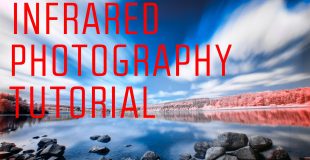How to capture an infrared photography landscape shot using a normal camera and an infrared filter.
Get the Hoya R72 – https://www.firstmanphotography.com/get/hoya-r72
Follow First Man Photography for the latest updates:
Instagram – http://instagram.com/adamkarnacz
Facebook – https://www.facebook.com/firstmanphoto
Twitter – https://twitter.com/adamkarnacz
Medium – https://medium.com/@AdamKarnacz
Google+ – https://www.google.com/+Firstmanphotography
Website – http://www.firstmanphotography.com/
FREE eBook – http://www.firstmanphotography.com/ebook
Subscribe – http://bit.ly/FirstManSubs
If you have never seen Infrared Photography before then come and feast your senses. Capturing the light normally invisible to human eyes opens up a world of creative possibilities that would otherwise not exist.
This video tutorial is split into two parts with the first part showing you how to capture the raw infrared image whilst on location. The second part will guide through the post processing where we bring our plain red image to life.
See part 2 here – https://www.firstmanphotography.com/tutorials/edit-infrared-photos
To shoot infrared photography you do not need a special type of converted camera. The only requirement is a small investment in an infrared filter that will attach to your current lens. These filters remove all the colours of the spectrum apart from the wavelengths at the extreme red end which includes infrared. I recommend the Hoya R72 Infrared Filter and this can be purchased for between £30 and £90 depending on the size of your lens, see the link below. The only drawback with this filter is it lets only a small amount of light through so to properly expose an image it will require a long exposure. Whilst this makes portraits tricky there are still endless possibilities in the realm of landscapes and cityscapes and there are not many photographers out there doing it. Just check Flickr to confirm this.
The characteristics of infrared light differ from that of ‘normal’ white light we are used to experiencing everyday. For example, green foliage such as grass and trees reflect a large amount of infrared light meaning they will be very bright in your final processed image. This is known as the ‘Wood Effect’ named after Robert W. Wood who pioneered #Infrared photography. It is caused by the transparency of chlorophyll to infrared light allowing the light to pass through into the cells of the plants and be reflected back again. Viewed normally, chlorophyll will reflect all the green light back giving leaves and grass it’s green appearance.
Capturing infrared photography in this way requires a long exposure. Please see the long exposure tutorial here:
http://www.firstmanphotography.com/tutorials/long-exposure-photography-tutorial
The infrared photography image captured by the camera will be very red and require some careful post-processing. The second part on how to post-process the images is available now at https://youtu.be/z2QnwnhG9aI
http://www.firstmanphotography.com/tutorials/infrared-photography-part-1
#infraredphotography
Original source

16 responses to “How to Shoot Infrared Photography Using an IR Filter”
Would you clear up a confusion please? you have set the camera to 1/60th sec but you then say that you have set the camera to bulb for a 6 minute plus exposure. which is it please
Great video!
nice video. can you turn off your music or turn it down a bit next time. its hard trying to listen to your voice
You mentioned that you used a 'Hoya' filter but never stated what 'nm' is was ALSO what lens did you use?
Thank You
Great vid, just a note to some viewers, if you have a high end camera like a 5D mkii the strap will come with a rubber view finder block, saves messing about with messy tape, you can also buy them very cheaply online. Thanks again!
Sam
As usual a brilliant video and I must visit that location. Kodak make a full set of filters with some numbers referring to different frequency of the rays and Cokin make one too. I'm just bought a EOS 5 and going to try it with infrared film to see how it turns out.
The moment I put on that Hoya filter my focus is totally off. I cannot get one sharp picture. That's so annoying :/
Thanks for the video!
I'm wondering if no other in-camera settings were adjusted (ex. custom white balance) when taking this shot. Your foliage comes out a lot whiter than mine and my overall image is MUCH redder than yours.
Thanks so much!
really great! But I have some doubts…could you help me?
Why did you use such a long exposure like that? Why do not use f number at a lower value, with an ISO a little higher?
Is it necessary to change any technical configuration in the camera?
thank you!
Great video ! I think I have found a great channel for photography 🙂
Awesome video! just started with IR myself and was looking for a video like this. Thanks for the tutorial :
Hey Adam! This is the video that originally lured me to your channel. Have you ever tried shooting on the other end of the spectrum? i.e. using a UV-pass filter, which only lets through UV light? It seems like that isn't widely used and I wonder what your thoughts on the matter are 🙂
What causes under exposed edges on infrared film?
how come you didn't set custom white balance? i thought that was essential when it comes to ir photography..nice tutorial!
Great Tutorial…thanks